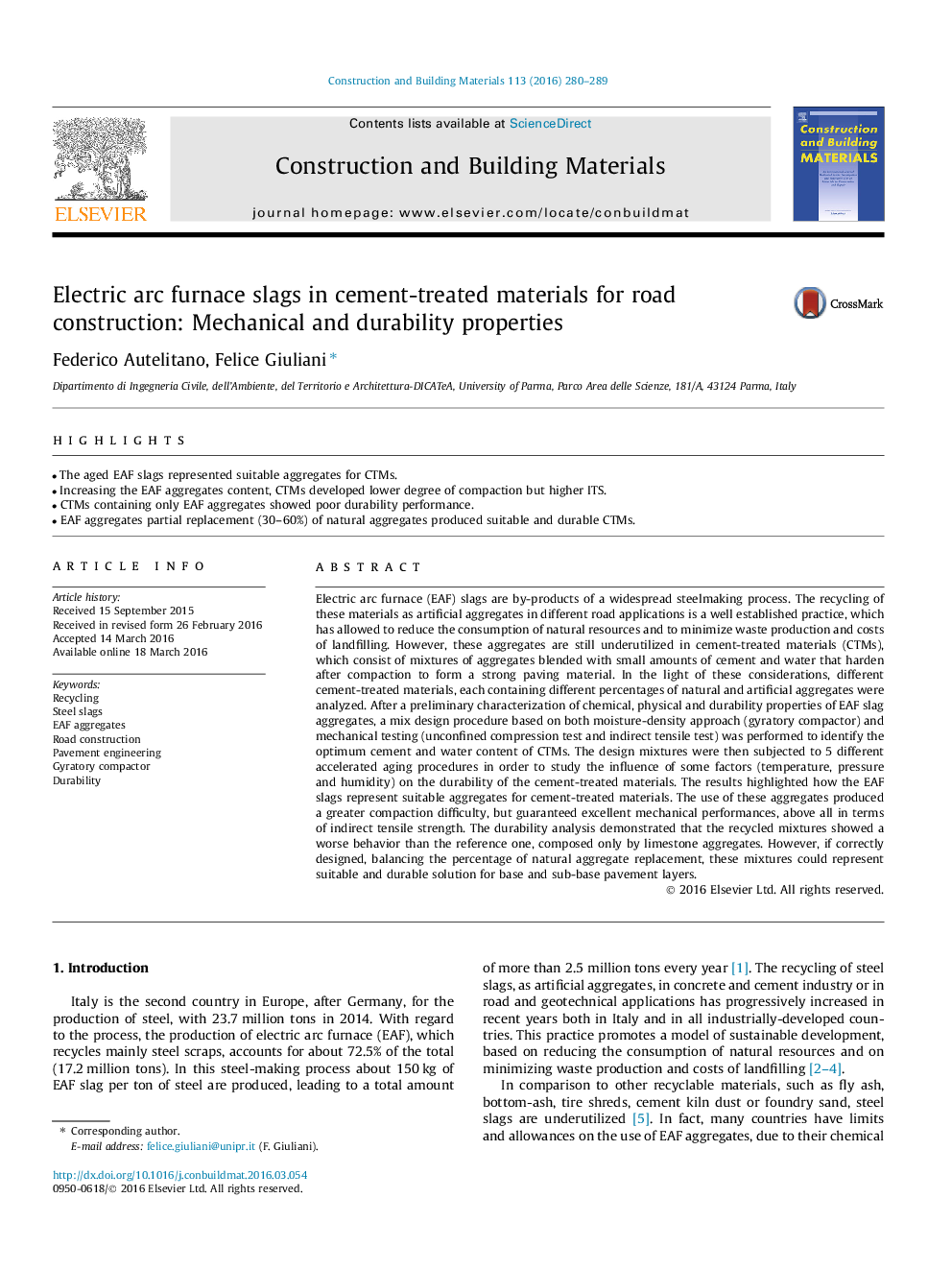| Article ID | Journal | Published Year | Pages | File Type |
|---|---|---|---|---|
| 256157 | Construction and Building Materials | 2016 | 10 Pages |
•The aged EAF slags represented suitable aggregates for CTMs.•Increasing the EAF aggregates content, CTMs developed lower degree of compaction but higher ITS.•CTMs containing only EAF aggregates showed poor durability performance.•EAF aggregates partial replacement (30–60%) of natural aggregates produced suitable and durable CTMs.
Electric arc furnace (EAF) slags are by-products of a widespread steelmaking process. The recycling of these materials as artificial aggregates in different road applications is a well established practice, which has allowed to reduce the consumption of natural resources and to minimize waste production and costs of landfilling. However, these aggregates are still underutilized in cement-treated materials (CTMs), which consist of mixtures of aggregates blended with small amounts of cement and water that harden after compaction to form a strong paving material. In the light of these considerations, different cement-treated materials, each containing different percentages of natural and artificial aggregates were analyzed. After a preliminary characterization of chemical, physical and durability properties of EAF slag aggregates, a mix design procedure based on both moisture-density approach (gyratory compactor) and mechanical testing (unconfined compression test and indirect tensile test) was performed to identify the optimum cement and water content of CTMs. The design mixtures were then subjected to 5 different accelerated aging procedures in order to study the influence of some factors (temperature, pressure and humidity) on the durability of the cement-treated materials. The results highlighted how the EAF slags represent suitable aggregates for cement-treated materials. The use of these aggregates produced a greater compaction difficulty, but guaranteed excellent mechanical performances, above all in terms of indirect tensile strength. The durability analysis demonstrated that the recycled mixtures showed a worse behavior than the reference one, composed only by limestone aggregates. However, if correctly designed, balancing the percentage of natural aggregate replacement, these mixtures could represent suitable and durable solution for base and sub-base pavement layers.
